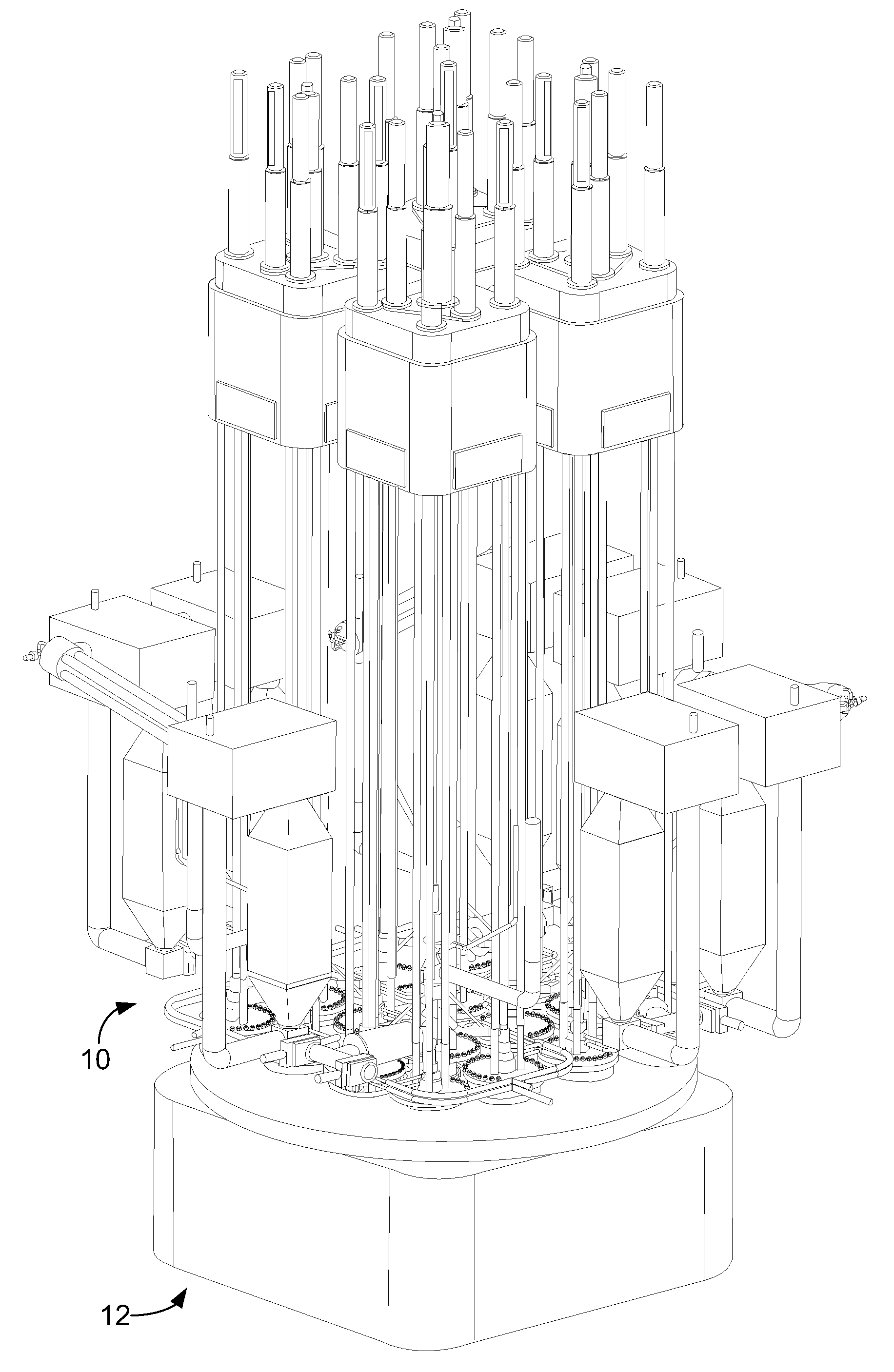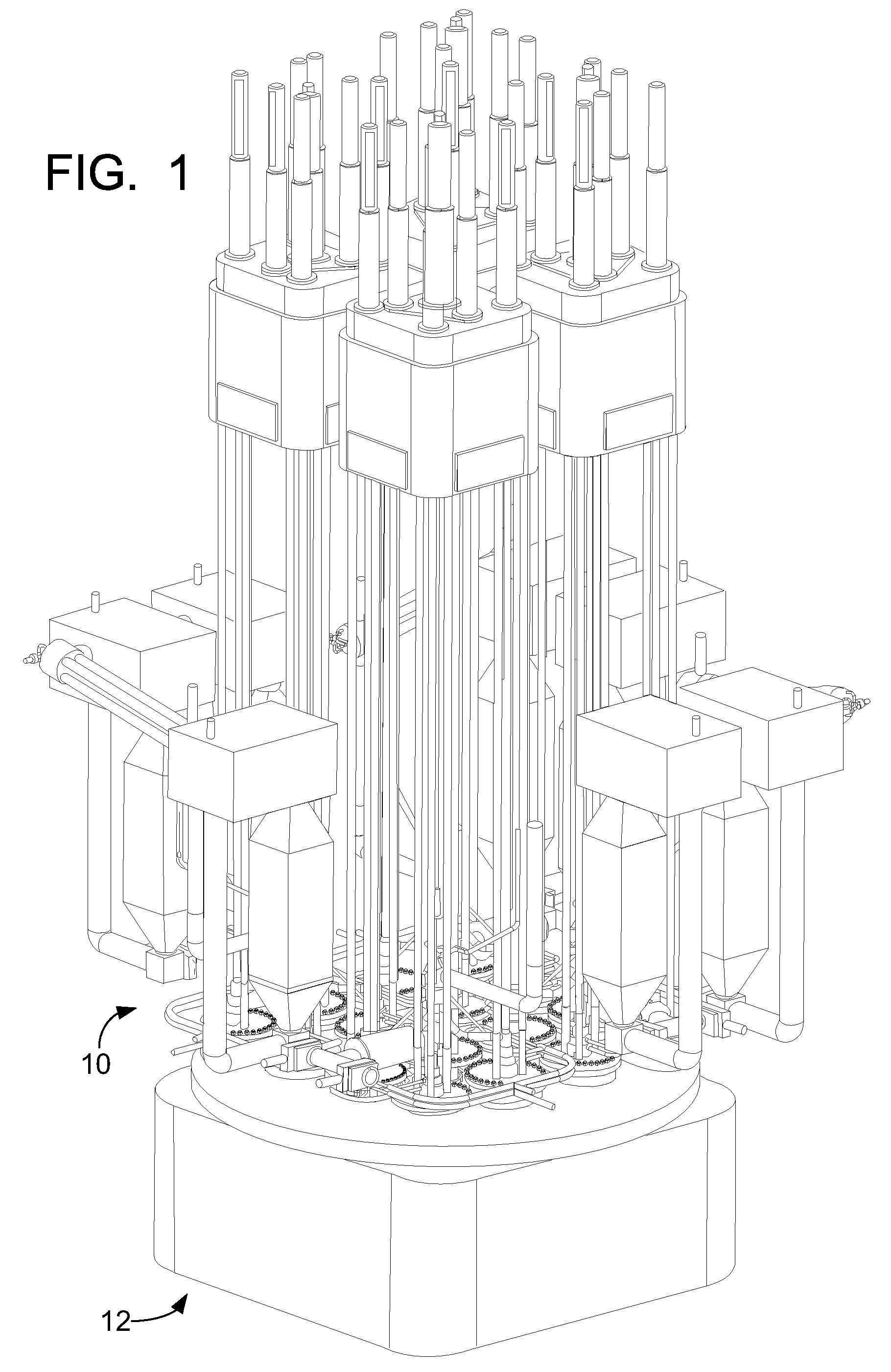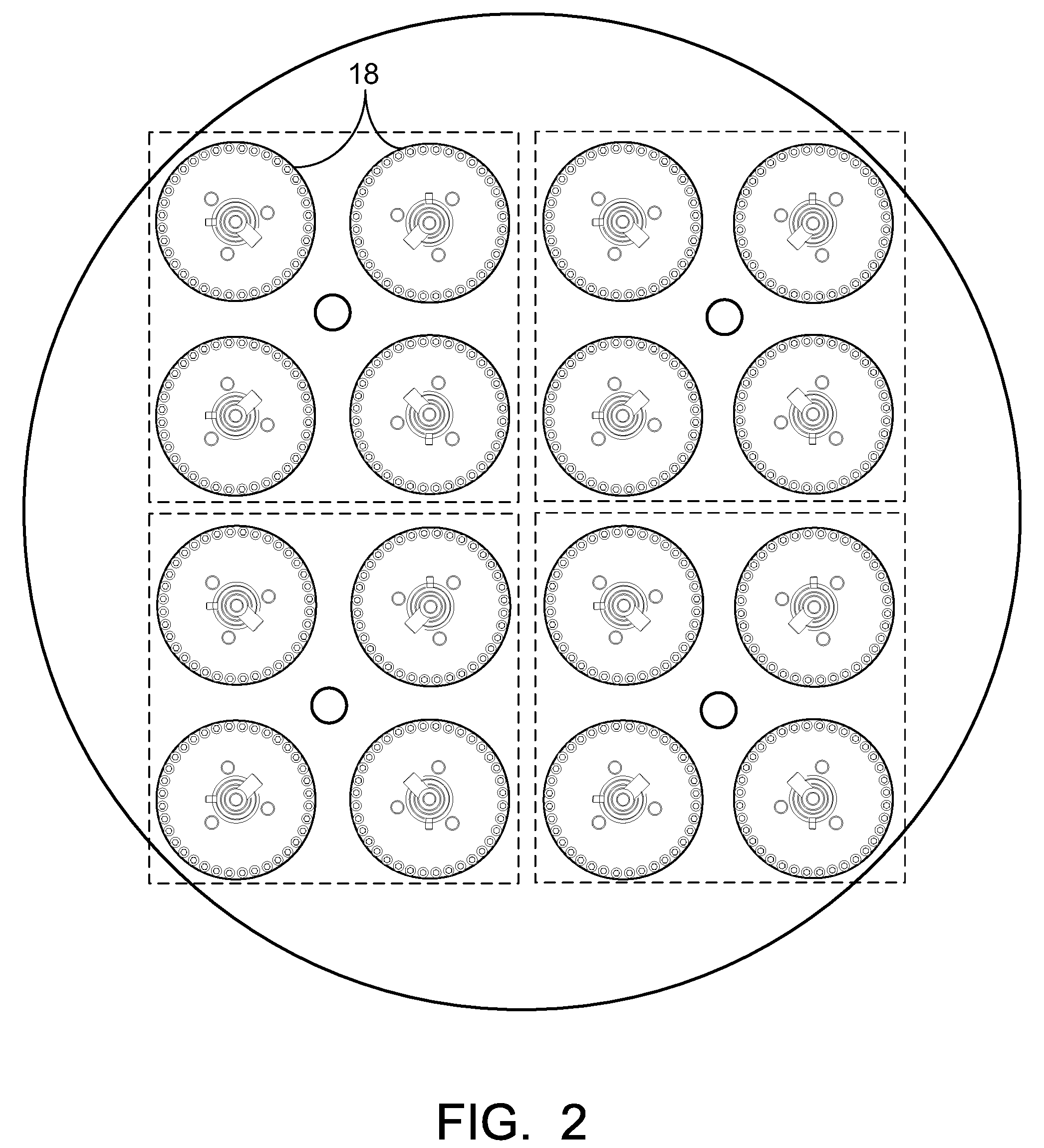Combinatorial heterogeneous-homogeneous reactor
a heterogeneous, nuclear reactor technology, applied in nuclear reactors, nuclear elements, greenhouse gas reduction, etc., can solve the problems of limited inability to achieve specific activity of sup>99/sup>mo, and inability to maintain continuous stable operation
- Summary
- Abstract
- Description
- Claims
- Application Information
AI Technical Summary
Benefits of technology
Problems solved by technology
Method used
Image
Examples
Embodiment Construction
[0030]As seen in FIG. 1, the invention is generally indicated by numeral 10. The combinatorial heterogeneous-homogeneous reactor arrangement 10 is generally comprised of three major subsystems, namely the reactor core 12, the reactor cooling system 14 (FIG. 6), and the reactor gas management system 16 (FIG. 9). Unlike a reactor with uranium pellets in clad fuel rods used in the production of energy to produce electricity, this medical isotope production reactor uses a liquid fuel solution that circulates through the core.
[0031]The reactor core 12 is comprised of a modular heterogeneous lattice such as graphite, beryllium, water, steel or some other neutron reflecting material that minimizes neutron leakage and optimizes neutron economy which has a plurality of removable homogeneous fuel assemblies 18. The fuel assemblies 18 within the lattice are interlinked at a common upper plenum 19 to insure system thermodynamic stability.
[0032]The fuel assemblies 18 are typically grouped into s...
PUM
 Login to View More
Login to View More Abstract
Description
Claims
Application Information
 Login to View More
Login to View More - R&D
- Intellectual Property
- Life Sciences
- Materials
- Tech Scout
- Unparalleled Data Quality
- Higher Quality Content
- 60% Fewer Hallucinations
Browse by: Latest US Patents, China's latest patents, Technical Efficacy Thesaurus, Application Domain, Technology Topic, Popular Technical Reports.
© 2025 PatSnap. All rights reserved.Legal|Privacy policy|Modern Slavery Act Transparency Statement|Sitemap|About US| Contact US: help@patsnap.com



